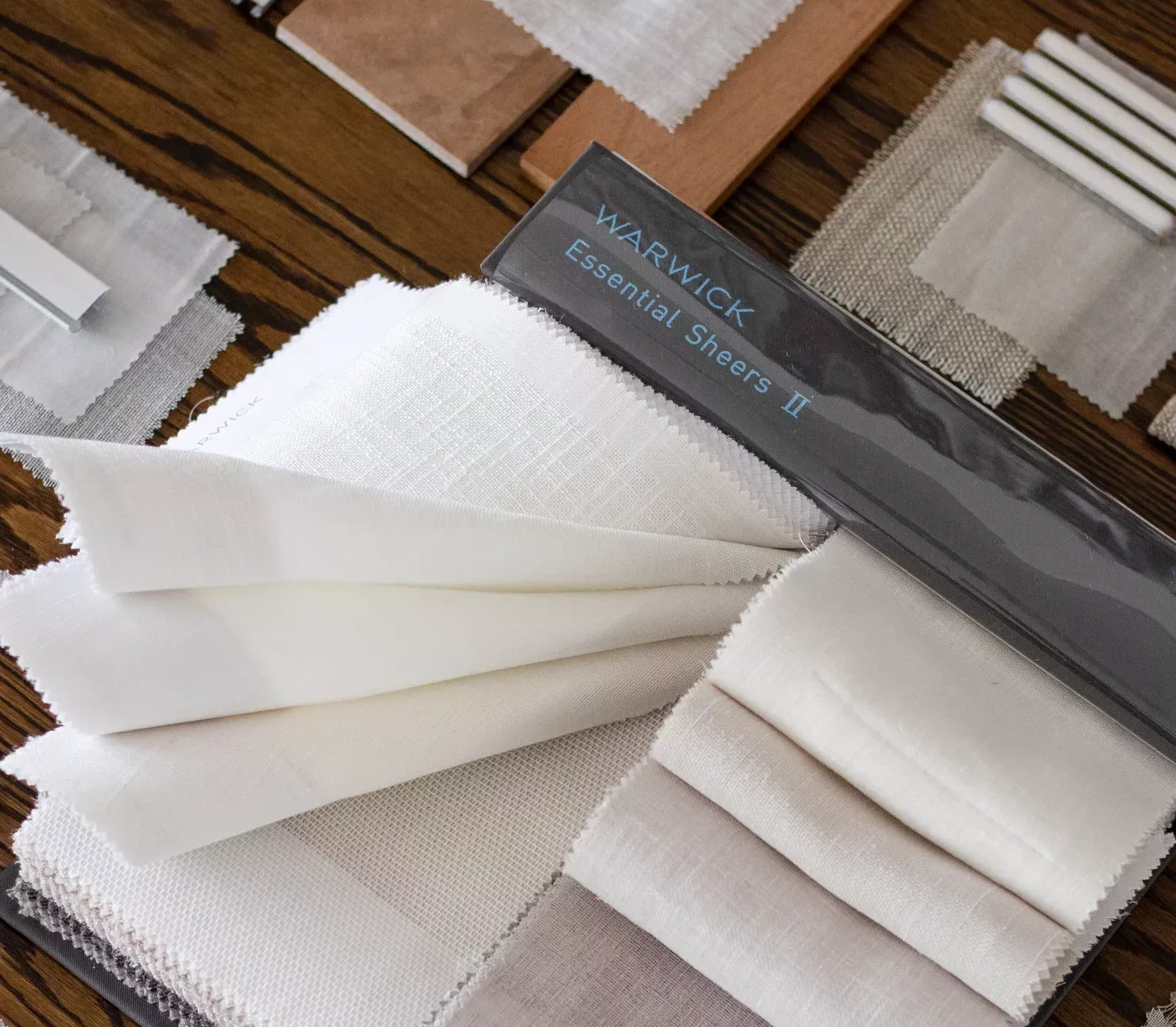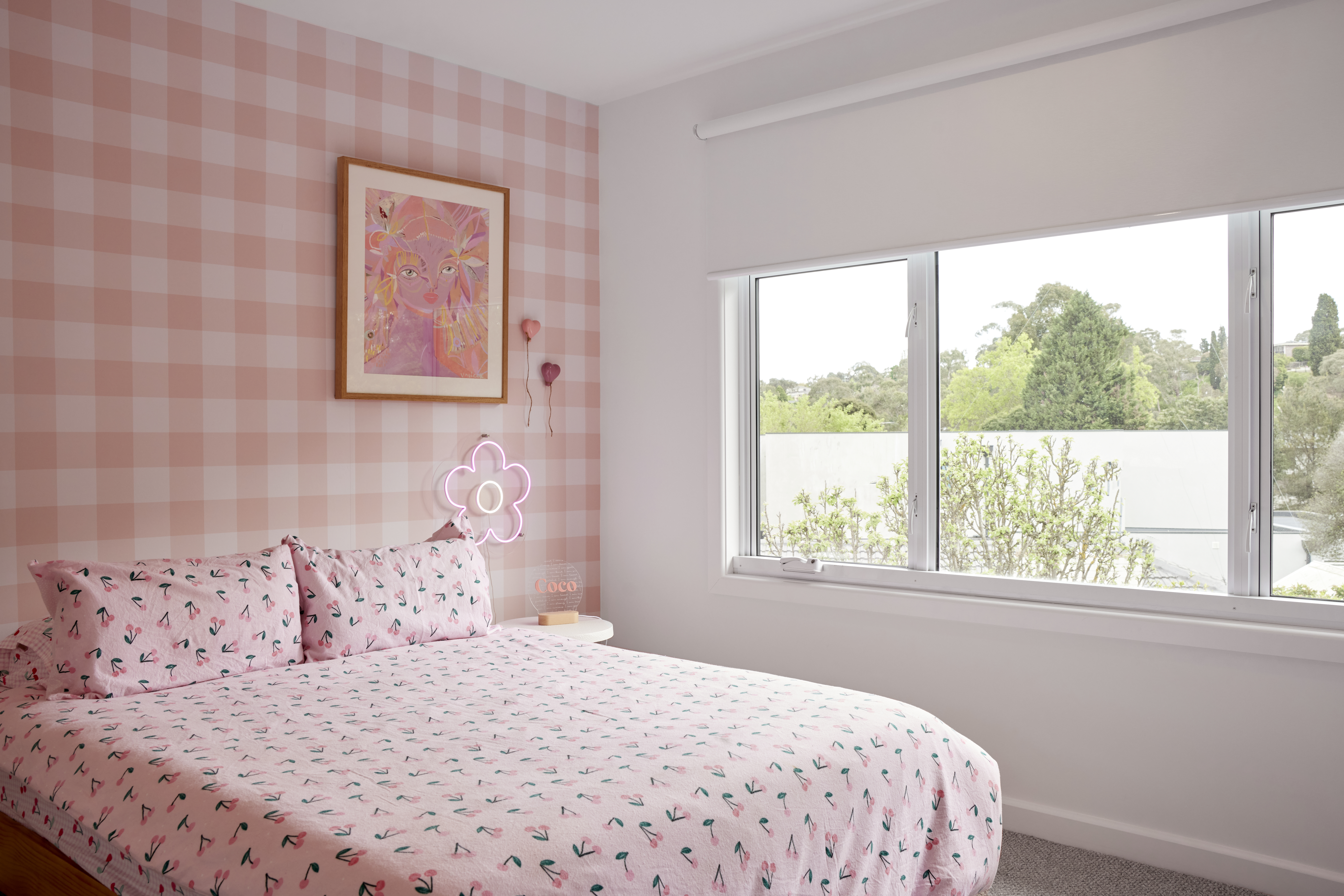Delicate, light, translucent Sheers.
We dive into the finer details of Sheer Curtains with James Dunlop.
| Topic | Designer Tips |
| Photography | James Dunlop |
| Share | Email Facebook Pinterest |

Sheer Curtains have evolved to bear little resemblance to the doily-esque net curtains of old. Florals and lace have been usurped by a desire for texture – be that fine, chunky, or smooth, with a lustrous or organic look. The romance of Sheers is found in their ability to filter soft light into modern homes, but their continued popularity in interior design is due to their practical, functional prowess.
The way we furnish our interiors is informed not only by trends but by the structure which surrounds us. Urban environments constructed in the early 20th century favoured Victorian and Edwardian architecture, therefore homes were comprised of many small rooms with fireplaces and sash or bay windows. Following WWII and the subsequent baby boom, the housing expansion of the 1940s-1960s created ‘suburbia.’ With a need to house a lot of people quickly there was little time for architectural creativity, thus stud heights were lowered, and small windows and kitchens were installed.
On the other hand, European innovators such as Mies van der Rohe, Le Corbusier, and Frank Lloyd Wright inspired a new generation of architectural figures to pioneer modern design styles across the Americas and Australasia. This evolution occurred alongside improved home insulation and cultural changes to our lifestyles, placing greater emphasis on expansive windows, high studded ceilings, and open plan living.
Historically, Sheer Drapes were limited by the technical restraints of loom size, initially being woven on two bed linen looms at 280cm wide, before evolving to maintain an industry standard of 310cm-320cm wide. The recent advancement of loom capacity to weave extra-wide 350cm drapes reduces the need to join seams, therefore creating ‘continuous drapery’ which takes nothing away from the ambiance of a space and the vistas beyond.
Sheer Curtains work particularly well in modern architectural and coastal homes, softening windows without interfering with the view and preserving privacy. Through the addition of texture, Sheers bring a human element to industrial spaces where concrete, glass and steel dominate the scheme, and add femininity to the room. In addition, they protect interior furnishings from fading in harsh UV rays and regulate the room’s temperature by day and overnight.


Sheer, Semi-Sheer + Main Drape.
Sheer, Semi-Sheer, and main Drape are key terms used to differentiate the opacity and weight of textiles. The weight is measured in grams per square metre (GSM) i.e., how many grams does one square metre of fabric weigh? In general, thicker textiles are denser and therefore have a higher GSM and less opacity.
A Sheer is something you can see through, either because the fabric has a very fine construction or because it has a loose construction with open fibres.
A Semi-Sheer is more densely woven with some light transmission and luminosity. Rather than seeing directly through the fabric, you will see shapes and shadows.
The main Drape is a solid face fabric in a dense weave, often featuring patterns and prints
“Sheer Curtains work particularly well in modern architectural and coastal homes, softening windows without interfering with the view and preserving privacy”
— James Dunlop

To line or not to line?
In our eyes the answer is always yes. The key to any Curtain is the lining, it’s the most important part to get the best result. A lining is invaluable in extending the life of all Curtains and soft furnishings in your home, but especially delicate Sheers.
Linen is an industry favourite, whether it be natural or a linen-look fabric. The magic of linen is in the translucent quality – you see its texture as you look through it – but using a blackout lining behind it can make a linen look flat and lose its dreamy effect. However, by incorporating a plain, inexpensive polyester voile lining the curtain will retain its ethereal quality and the linen will be protected from UV damage. A good trick is to have a plain voile as a detachable lining against a Sheer. So, when the time comes to replace that component you can keep the original face fabric, which adds value to the face fabric too.
By lining patterned Sheer textiles they become a main Drape rather than just a Sheer. This lighter look is especially popular in warm, coastal climates like the upper North Island of New Zealand, or in New South Wales, Queensland, and Western Australia.
Curtains + Blinds.
Roller blinds are a great alternative to ‘Double Tracks’ which are constructed with the lining on the back Track, and the Sheer on the front. We don’t ever want the face fabric to be unlined, which is what the Double Track is for. As soon as the linen Sheer is pulled across into the sun, the UV is doing its work on it. We would always recommend a lined Sheer and a Roller Blind, or some type of filter Blind. It’s the biggest protection you can have because Roller Blinds protect the upholstery fabric on your sofa etc. too – it’s a double whammy effect.
Lots of clients buy Blinds because they’re an economical option but come back later to add Sheers because Blinds are very hard and clinical, especially in the main living room or master bedroom. The Sheer adds softness, texture and movement to a room, catching the light because they billow and move with the breeze.
To protect your home from excess heat and light but maintain the aesthetic of a floaty linen Sheer, we suggest lining the Sheer Curtain with a plain voile, then installing Venetians, Shutters, or Roller Blinds as the blackout component. The Blind can nestle inside the window and almost disappear, but it has the functionality to control the light at day or night.







